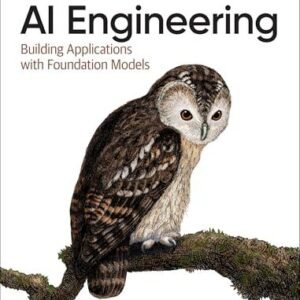In an increasingly interconnected world, the need for seamless communication across language barriers has never been more critical. As businesses expand their reach and cultures converge, the demand for accurate and efficient translation services grows exponentially. Enter Artificial Intelligence (AI): a transformative force reshaping how we approach language translation. Gone are the days of relying solely on human translators or clunky, outdated software. Today, AI-driven tools are not only enhancing the speed and accuracy of translations but also fostering a deeper understanding between diverse communities. In this article, we will explore the remarkable innovations in AI translation technology, its impact on global communication, and how it promises to bridge linguistic divides, making the world a more cohesive and collaborative place. Join us as we delve into the future of language and the role AI plays in redefining what it means to communicate across borders.
Table of Contents
- Understanding AI-Powered Translation Technologies and Their Impact on Global Communication
- Exploring the Challenges of Context and Nuance in AI Translations
- Best Practices for Implementing AI Translation Solutions in Diverse Industries
- The Future of Communication: How AI Will Shape Multilingual Interaction and Collaboration
- To Conclude
Understanding AI-Powered Translation Technologies and Their Impact on Global Communication
AI-powered translation technologies have emerged as a transformative force in breaking down linguistic barriers and expanding global communication. Through advanced algorithms and machine learning techniques, these systems can analyze vast amounts of linguistic data, enabling them to produce translations that are not only accurate but also contextually relevant. Key features of AI translation technologies include:
- Real-time Translation: Instant communication across languages, facilitating seamless interactions.
- Contextual Understanding: Recognition of idioms and cultural nuances that enhance translation fidelity.
- Continuous Learning: The ability of AI to improve its translation accuracy over time through user input and feedback.
As these technologies continue to evolve, they are reshaping the landscape of international business, diplomacy, and cultural exchange. Companies are leveraging AI translation tools to broaden their outreach and ensure that their messages resonate across diverse markets. The integration of AI in translation services also paves the way for enhanced customer experiences, as businesses can now communicate more effectively with clients from different linguistic backgrounds. However, as reliance on such technologies increases, challenges such as preserving the authenticity of cultural expressions and ensuring data privacy must also be addressed, raising important questions about the balance between efficiency and cultural sensitivity.
Exploring the Challenges of Context and Nuance in AI Translations
One of the significant hurdles in the realm of AI-driven translations is the intricate balance of context and nuance. Human languages are deeply layered, rich with cultural connotations, idioms, and subtleties that often defy straightforward interpretation. AI translation tools can struggle with these complexities, leading to translations that are technically correct yet lacking in emotional depth or cultural resonance. For instance, phrases like “kick the bucket” typically convey a humorous sentiment about death in English, but without adequate contextual awareness, an AI could misinterpret this as a literal event. This results in translated content that may confuse or even offend the target audience.
To overcome these translation challenges, AI systems must evolve to incorporate a broader understanding of contextual cues and cultural references. Several strategies can be employed to enhance translation quality, such as:
- Utilizing machine learning algorithms that adapt over time based on user feedback.
- Incorporating context-aware neural networks that analyze surrounding text to infer meaning.
- Engaging with native speakers to validate and refine translations, ensuring that cultural nuances are respected.
Investing in these advancements will not only improve the accuracy of translations but also foster better understanding across diverse cultures, paving the way for more effective communication in our globalized world.
| Challenge | Potential Solution |
|---|---|
| Literal Interpretations | Integrate contextual understanding algorithms |
| Cultural Misunderstanding | Utilize feedback from native speakers |
| Idioms and Colloquialisms | Expand the training dataset with diverse text sources |
Best Practices for Implementing AI Translation Solutions in Diverse Industries
To successfully implement AI translation solutions across various industries, organizations should prioritize customization and integration. Tailoring the AI models to fit specific industry jargon and cultural nuances is essential for improving accuracy and relevance. For instance, in the legal sector, where terminology can be complex, fine-tuning translation algorithms to understand context and specialized language can significantly enhance communication. Moreover, ensuring seamless integration with existing software systems—such as CRM tools or content management platforms—will streamline workflows and increase efficiency.
Another vital aspect is continuous feedback and training. Establishing a feedback loop where users can report inaccuracies or suggest improvements allows the AI system to learn and evolve. This can be particularly useful in sectors like healthcare, where precise communication is critical. Additionally, organizations should focus on building a multilingual team that can oversee the AI translation process, ensuring that human oversight complements machine capabilities. By fostering a collaborative environment between human linguists and AI technology, businesses can maximize the effectiveness of their translation solutions.
The Future of Communication: How AI Will Shape Multilingual Interaction and Collaboration
As the world becomes increasingly interconnected, the demand for seamless multilingual communication escalates. AI is poised to transform how we engage with one another across language barriers by offering real-time translation tools capable of understanding context, idioms, and cultural nuances. Smart algorithms are already breaking down traditional barriers, enabling businesses to expand their reach and individuals to forge personal connections without the limitations imposed by language differences. By leveraging natural language processing and deep learning, AI-driven solutions can ensure that conversations and collaborations transcend geographical boundaries and diverse linguistic landscapes.
Furthermore, the integration of AI in communication platforms promises to enhance collaboration within multilingual teams. Consider the following capabilities facilitated by AI technology:
- Real-Time Translation: Instantaneous translation during video calls and messaging to promote dynamic discussions.
- Contextual Understanding: AI tools can accurately interpret conversations based on situational context, ensuring clarity.
- Content Localization: Tailoring marketing materials and documents to cater to specific cultural audiences, thus increasing engagement.
In future developments, we may see the emergence of partnerships between leading tech companies and linguistic experts to create more advanced solutions that not only translate words but also convey emotions and cultural references. The implications for global commerce, diplomacy, and cross-cultural relationships are profound, opening doors to collaboration that once seemed improbable.
To Conclude
As we navigate an increasingly interconnected world, the importance of effective communication cannot be overstated. AI is at the forefront of this revolution, breaking down language barriers and fostering understanding among diverse cultures. The advancements in translation technology are not just about converting words; they are about bridging gaps, creating opportunities, and enhancing collaboration on a global scale.
As we look to the future, the potential for further innovation in AI-driven translation tools is immense. From real-time conversations to seamless localization of content, the possibilities are expanding every day. Embracing these technologies not only benefits businesses and organizations but also enriches our personal interactions and broadens our horizons.
as we continue to explore new frontiers in AI and communication, let us remain committed to leveraging these tools responsibly and thoughtfully. By doing so, we can ensure that technology serves as a bridge, not a barrier, allowing us to connect, understand, and collaborate in ways we once only dreamed possible. The revolution is here, and it speaks every language. Get ready to join the conversation.





